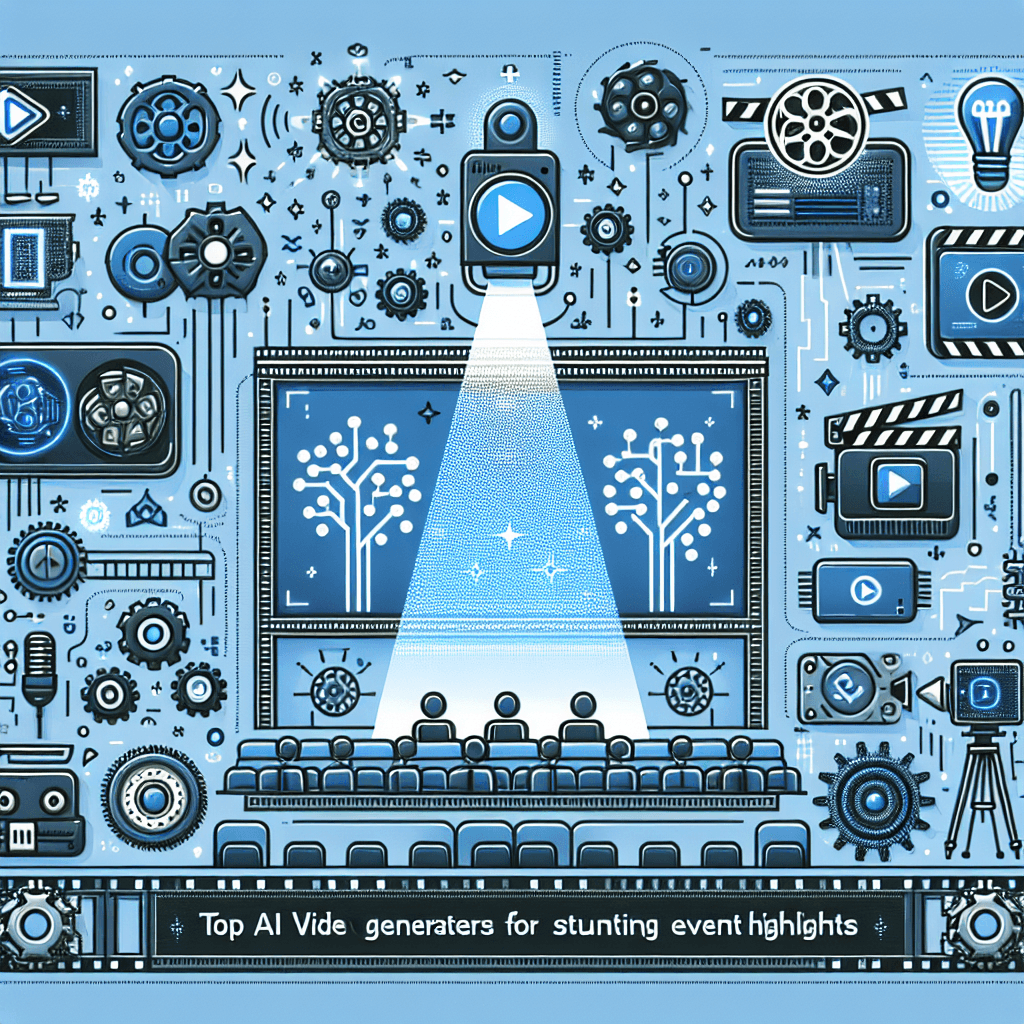In the fast-evolving landscape of game development, the integration of Artificial Intelligence (AI) revolutionizes the way designers create assets. Gone are the days when artists painstakingly crafted each element by hand. Now, with AI image generators, developers can rapidly produce stunning game assets that enhance visual storytelling and gameplay experiences. Let’s explore some of the top AI image generators that are reshaping the world of game design.
1. Understanding the Role of AI in Game Asset Creation
AI technology has infiltrated nearly every industry, and game development is no exception. The ability of AI to generate images from simple prompts allows developers to bring their visions to life with unprecedented speed and efficiency. These AI systems can analyze users’ inputs and refine outputs to create images that fit the desired style and atmosphere of a game. The creative potential is only limited by the imagination of the users.
2. The Rise of AI Image Generators
As gaming demands more compelling graphics and immersive worlds, the demand for high-quality art assets has skyrocketed. AI image generators have emerged as essential tools for developers, allowing both indie and AAA studios to accelerate production pipelines. The convergence of art and technology is undoubtedly a game changer.
3. Midjourney: Creating Unique Game Visuals
Midjourney stands out among AI image generators due to its exceptional ability to create unique visuals based on imaginative prompts. It operates through Discord and employs a community-driven model, allowing artists and developers to collaborate and refine their projects in real-time. This generator excels in generating atmospheric art and supports various art styles, making it ideal for developers seeking to create anything from fantasy landscapes to sci-fi characters.
4. DALL-E: From Concept to Reality
DALL-E, developed by OpenAI, has made waves in the AI community for its ability to generate highly detailed images from textual descriptions. This tool is especially beneficial for game designers looking to turn concepts into visual representations quickly. By simply inputting a description, users can explore a plethora of unique art styles and ideas that can serve as inspiration for game design.
5. Artbreeder: Collaborating with AI to Produce Art
Artbreeder offers an innovative approach by allowing users to blend images to create new artworks. It enables game developers to leverage existing art and modify it according to their needs. By mixing various traits, developers can produce an infinite variety of characters, landscapes, and items, proving to be a vital tool for iterative design processes.
6. NightCafe Studio: An Artistic Playground
For those looking for variety, NightCafe Studio is a robust platform that allows users to generate art using several different algorithms. It offers various options for artists who want creative flexibility. With its community features, NightCafe encourages sharing and collaboration, making it an excellent resource for game developers seeking feedback on potential assets.
7. RunwayML: Expanding Creativity with AI
RunwayML pushes the boundaries of what’s possible with AI in creative fields. Targeted at both developers and artists, it provides tools for generating and editing images using AI. With features like inpainting and style transfer, RunwayML enables developers to modify existing images effortlessly and stimulate creativity by presenting various artistic interpretations.
8. DeepAI: Simplistic and Effective
DeepAI provides a straightforward interface for generating high-quality images using text prompts. While its aesthetic may not be as advanced as some other generators, its simplicity allows for quick image production. This platform is perfect for developers who need a quick asset without the intricate styles of more complex tools.
9. NVIDIA GauGAN: Painting with AI
NVIDIA’s GauGAN is a remarkable tool that lets users create photorealistic artworks from simple sketches and doodles. Game designers can rapidly design environments and landscapes using basic shapes, which the AI then transforms into realistic scenes. The incredible capabilities of GauGAN encourage game developers to experiment in real-time with their creative ideas.
10. Pixray: Flexible and Versatile
For developers interested in a customizable experience, Pixray provides an adaptable AI image generation library. It offers various models and settings, allowing users to experiment with different parameters to achieve desired artistic outcomes. Whether generating images for concept art or in-game assets, Pixray excels in versatility.
11. Craiyon: Simple and Accessible AI
Previously known as DALL-E Mini, Craiyon allows users to create artworks with simple prompts. While it might not yield the most complex images, its easy access and user-friendliness make it a popular choice for quickly generating visuals. Game developers looking to conceptualize ideas can benefit greatly from this tool’s simplicity.
12. Stable Diffusion: High-Quality Image Synthesis
As one of the most prominent AI image generators in the industry, Stable Diffusion specializes in generating high-quality images. It operates on a diffusion model, meaning it can produce incredibly detailed and coherent images. Developers can fine-tune Stable Diffusion’s capabilities to align with specific aesthetic goals, ensuring consistency across game assets.
13. Syntheyes: For Realistic 3D Assets
While many AI generators focus on 2D images, Syntheyes specializes in creating 3D assets. Ideal for developers working on complex environments or character models, Syntheyes utilizes deep learning techniques to create realistic textures and models. This is especially beneficial for developers looking to reduce the time spent creating intricate 3D environments.
14. StarryAI: Fostering Unique Art Styles
StarryAI is an innovative platform that allows users to generate beautiful artwork using AI and style applications. With a focus on simplicity and ease of use, it invites developers to experiment with different styles and compositions. This approach empowers designers to create unique assets that enhance their games while preserving a personal touch.
15. Huntsman: Conceptual Art Generation
Designed for developers interested in concept art, Huntsman allows users to generate imaginative visuals based on keywords. The platform emphasizes art styles that evoke certain moods and themes. By tailoring generated images to precise requirements, Huntsman proves invaluable for setting the visual tone of a game.
16. Fotor: Easy Design for Game Assets
Fotor is an excellent tool for developers who want to create stunning visuals without needing extensive design skills. Its AI-driven features help users design graphics, promotional material, and even game covers effortlessly. With a user-friendly interface, Fotor bridges the gap for non-artistic developers needing to create standout assets.
17. Blender: Augmenting 3D Artistic Capabilities
While primarily known as a 3D modeling tool, Blender incorporates AI to enhance its capabilities. The platform provides a range of features such as texture generation, making it an invaluable tool for developers aiming to create intricate game assets. Blender empowers creators to explore every avenue of 3D design quickly and effectively.
18. The Ethical Consideration of AI Art
As game developers embrace AI-generated content, ethical considerations arise. Issues surrounding copyright, ownership, and the implications for traditional artists cannot be overlooked. Developers must navigate these concerns while continuing to leverage AI tools, fostering a balance between innovation and ethical responsibility.
19. Future of AI in Game Design
Looking ahead, the future of AI in game design appears promising. As technological advancements continue, we can expect even more sophisticated tools to emerge. Future AI image generators will likely become more intuitive, enabling developers to refine and create assets seamlessly. This evolution promises to unlock new levels of creativity within the industry.
20. Conclusion: AI as the Catalyst for Creative Evolution
In conclusion, AI image generators are not just tools—they are early glimpses into the future of game design. Their contributions have drastically changed how assets are conceived and produced, enabling quicker turnarounds and freeing up time for developers to focus on storytelling and gameplay mechanics. As technology progresses and the community adapts, these AI platforms will undoubtedly continue to shape the landscape of gaming for years to come. For game developers, embracing these tools is not just beneficial; it’s essential for staying ahead in a competitive marketplace.








